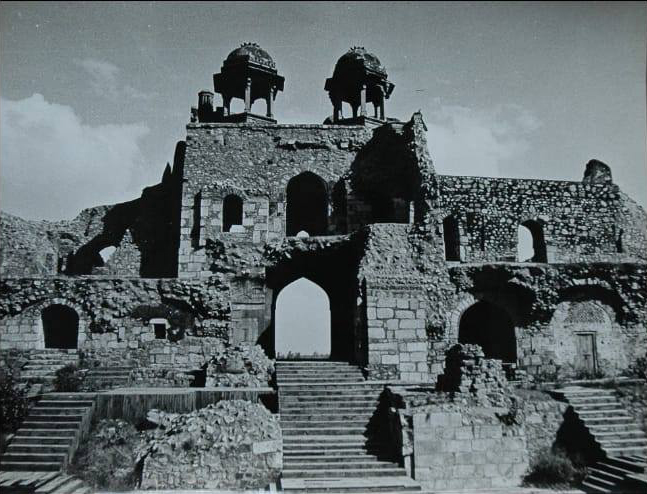Purana Qila

Image courtesy: Alkazi Theatre Archives
“Our own classical heritage (in terms of production, stage design and theatre architecture) would acquire new life if it were subjected to as wide a variety of interpretation as possible by the most creative minds in the theatre. We hold the past not too much in respect, but too much in awe. We stumble under its enormous weight; we speak of it in hushed whispers. We do not question it; we do not grapple with it. The past is in our blood; we do not need to carry it on our backs.”
−E.Alkazi, ‘The Poetics of Theatre’, Natya, Winter Issue, 1959-60
In 1963, amidst the ruins of Feroz Shah Kotla, E.Alkazi depicted futilities of war and aftermath of violence, by staging Dharamvir Bharati’s anti-war play, Andha Yug. Set on the last day of the battle of Kurukshetra, this episode from Mahabharata, stood symbolic to that point in History− the Cold War was at its heights, news from Vietnam were sordid, and India had just lost the war with China. Andha Yug was again presented, in 1974 at the Purana Qila. The open air theatre at the old fort was designed and supervised by Alkazi in collaboration with the Archaeological Survey of India. With the historical backdrop of the crumbling Nehruvian dream and a few years before the infamous Emergency, Alkazi staged Girish Karnad’s Tuglaq, against the battlements of this medieval Indian architecture, in the year 1972, making the experience of history palpable to the present. What had been popularly interpreted as a ‘theatre of spectacle’, can be reinterpreted as a ‘theatre of sustenance’, where the historical monuments not only contributed to the aesthetics and ecology of the performance, but has been ‘tied up with the poetics of theatre’ itself. As E. Alkazi says, “Each age demands a new interpretation of the past. It is such constant re-assessment which keeps a tradition alive and vital. The richness of this heritage corresponds also to the degree of re-interpretation it has undergone.”
